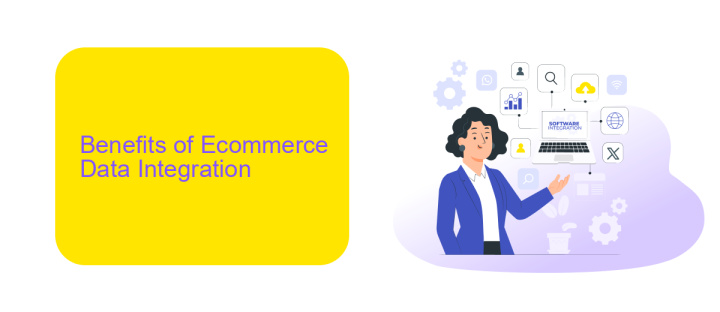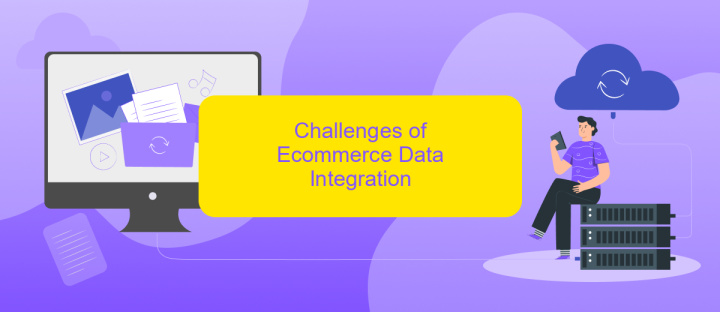Ecommerce Data Integration
In today's fast-paced digital marketplace, efficient eCommerce data integration is crucial for businesses aiming to stay competitive. By seamlessly connecting various platforms and data sources, companies can streamline operations, enhance customer experiences, and make data-driven decisions. This article explores the importance of eCommerce data integration, its key benefits, and strategies for successful implementation to help your business thrive in the online ecosystem.
Introduction
In the rapidly evolving world of ecommerce, seamless data integration is crucial for maintaining efficiency and competitiveness. Businesses must ensure that various systems, such as inventory management, customer relationship management (CRM), and sales platforms, communicate effectively with each other. This synchronization not only enhances operational efficiency but also improves customer experience by providing accurate and timely information.
- Streamlined operations through integrated systems
- Improved data accuracy and consistency
- Enhanced customer experience with real-time information
- Reduced manual data entry and errors
ApiX-Drive is a powerful tool that simplifies ecommerce data integration by connecting various applications and automating data transfer between them. By using ApiX-Drive, businesses can easily set up integrations without the need for extensive technical knowledge, allowing them to focus on their core activities. This results in a more efficient workflow and the ability to scale operations seamlessly.
Benefits of Ecommerce Data Integration

Ecommerce data integration offers numerous benefits that can significantly enhance business operations. By consolidating data from various sources, businesses can achieve a unified view of their operations, leading to better decision-making and improved customer experiences. This integration allows for real-time data updates, ensuring that inventory levels, customer information, and sales data are always current. Consequently, businesses can reduce errors, streamline processes, and respond swiftly to market changes, ultimately increasing efficiency and profitability.
Moreover, ecommerce data integration enables seamless communication between different systems and platforms. Tools like ApiX-Drive facilitate this process by providing easy-to-use solutions for connecting various applications without the need for extensive technical knowledge. This not only saves time but also reduces the costs associated with manual data entry and management. By automating data flows, businesses can focus more on strategic activities rather than operational tasks, thereby driving growth and innovation. Overall, the integration of ecommerce data is a critical component for any business aiming to stay competitive in today's fast-paced digital landscape.
Challenges of Ecommerce Data Integration

Integrating ecommerce data can be a complex task that presents multiple challenges for businesses. These challenges can hinder the seamless flow of information and impact overall operational efficiency.
- Data Consistency: Ensuring consistent data across multiple platforms can be difficult, leading to discrepancies and errors.
- Scalability: As businesses grow, their data integration needs become more complex, requiring scalable solutions that can handle increasing data volumes.
- Data Security: Protecting sensitive customer information during data transfer is crucial, and any breach can have severe repercussions.
- Compatibility Issues: Different systems and platforms may not be compatible, complicating the integration process.
- Real-time Data Processing: Many businesses require real-time data updates, which can be challenging to implement and maintain.
To address these challenges, businesses can utilize integration services like ApiX-Drive. This platform simplifies the process by offering automated data transfer between different systems, ensuring data consistency, scalability, and security. By leveraging ApiX-Drive, businesses can overcome the common hurdles of ecommerce data integration and enhance their operational efficiency.
Best Practices for Ecommerce Data Integration

Integrating ecommerce data effectively requires a strategic approach to ensure seamless operations and optimal performance. One key practice is to centralize data from various sources, such as sales platforms, CRM systems, and marketing tools, into a unified system. This helps in maintaining data consistency and accessibility.
Another crucial practice is to automate data integration processes. Manual data handling is prone to errors and inefficiencies. Utilizing services like ApiX-Drive can significantly streamline the integration process by offering automated workflows and real-time data synchronization.
- Ensure data accuracy by regularly validating and cleaning your data.
- Implement robust security measures to protect sensitive information.
- Monitor and audit data integration processes to identify and resolve issues promptly.
- Use scalable solutions that can grow with your business needs.
Finally, it's essential to continuously optimize your data integration strategy. Regularly review your processes, tools, and technologies to ensure they meet your evolving business requirements. By following these best practices, you can achieve efficient and reliable ecommerce data integration.
- Automate the work of an online store or landing
- Empower through integration
- Don't spend money on programmers and integrators
- Save time by automating routine tasks
Conclusion
In conclusion, the integration of ecommerce data is crucial for businesses looking to streamline operations and enhance customer experiences. By effectively merging data from various sources, companies can gain valuable insights, improve decision-making, and drive growth. The use of specialized tools and services like ApiX-Drive can simplify the integration process, making it more efficient and less prone to errors.
As ecommerce continues to evolve, the importance of seamless data integration will only grow. Investing in reliable integration solutions ensures that businesses remain competitive and responsive to market changes. With the right approach and tools, such as ApiX-Drive, organizations can unlock the full potential of their ecommerce data, leading to better performance and increased customer satisfaction.
FAQ
What is Ecommerce Data Integration?
Why is Ecommerce Data Integration important?
What are the challenges of Ecommerce Data Integration?
How can I automate the integration of my ecommerce data?
How do I get started with Ecommerce Data Integration?
Apix-Drive is a simple and efficient system connector that will help you automate routine tasks and optimize business processes. You can save time and money, direct these resources to more important purposes. Test ApiX-Drive and make sure that this tool will relieve your employees and after 5 minutes of settings your business will start working faster.


